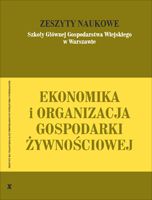Main Article Content
Article Details
BARNIER, M. (2004): A new partnership for cohesion. Convergence, competitiveness, cooperation. Third report on economic and social cohesion, European Commission.
BEUGELSDIJK, M., EIJFFINGER, S. (2003): The Effectiveness of Structural Policy in the European Union: An Empirical Analysis for the EU-15 during the Period 1995-2001, CEPR Discussion Paper No. 3879.
BIELECKI, J. (2004): Złoty dłużej w naszych portfelach, Rzeczpospolita, 02.10.04, Nr 232.
BOROWSKI, J. (red.) (2004): Raport na temat korzyści i kosztów przystąpienia Polski do strefy euro, Wydaw. NPB.
Economic Policy Committee EPC (2003): Key structural challenges in the acceding countries: the integration of the accesing countries into the Community's economic policy co-ordination processes, Brussels, 29 April.
European Commission, DG for Economic and Financial Affairs (2004a): EMU after 5 years, European Economy Special Report N°1/2004.
European Commission, DG for Economic and Financial Affairs (2004b): Economic forecasts. Spring 2004, European Economy N°2/2004.
Europejski Bank Centralny (2004): Biuletyn miesięczny wrzesień 2004, Frankfurt.
GLIGOROV, V., J. POSCHL, S. RICHTER i in. (2004): As East You Go, the More They Grow: Transition Economies in a New Setting, Research Reports, No. 308, July 2004, Wiener Institut fur Wirtschaftsvergleiche.
HALLET, M. (2004): Fiscal effects of accession in the new Member States, European Economy Economic Papers No0 203 May 2004, European Commission DG for Economic and Financial Affairs.
KOVACS, M.A. (2003): How real if the fear? Investigating the Balassa-Samuelson effect in CEC5 countries in the prospect of EMU enlargement, paper presented at the conference on Monetary Strategies for Accession Countries, Budapest.
LEPAPE, Y., O. LOUIS (2004): PPP and EU funds, what complementarities?, Revue Elargissement Special PPP, No 45 - June 2004.
LEPAPE, Y. M. LANTERI (2004): EU funds. What will be the new members' "break even point"?, Revue Elargissement No 67 - 21 June, 2004.
MACIEJKO, R. (2004): BCG: koszty pracy w Polsce będą na poziomie UE za kilkadziesiąt lat, http://www.schuman.org.pl/modules.php?name=News&file=article&sid=3186
Program konwergencji przyjęty przez Radę Ministrów w dniu 30.04.2004 r. Warszawa, kwiecień 2004 r.
UNECE (2004): Economic Survey of Europe 2004 No. 2, UNECE Economic Analysis Division, Genewa.
ZAWOJSKA, A. (2000): Unia Europejska. Unia Gospodarcza i Walutowa. Warszawa: Wydawnictwo SGGW.
Downloads
- Aldona Zawojska, Tomasz Siudek, Finansowe i pozafinansowe formy wspierania ochrony środowiska , Zeszyty Naukowe SGGW - Ekonomika i Organizacja Gospodarki Żywnościowej: Nr 38 (2000)
- Tomasz Siudek, Katarzyna Drabarczyk, Aldona Zawojska, Rozwój społeczny powiatów województwa mazowieckiego – kwantyfikacja i ocena , Zeszyty Naukowe SGGW - Ekonomika i Organizacja Gospodarki Żywnościowej: Nr 123 (2018)
- Aldona Zawojska, Beata Horbowiec, Ryzyko cenowe na rynku produktów rolno-żywnościowych: źródła, skutki i sposoby zarządzania , Zeszyty Naukowe SGGW - Ekonomika i Organizacja Gospodarki Żywnościowej: Nr 115 (2016)
- Aldona Zawojska, Wpływ wspólnej waluty europejskiej na rozwój sektora rolno-spożywczego , Zeszyty Naukowe SGGW - Ekonomika i Organizacja Gospodarki Żywnościowej: Nr 40 (2000)
- Aldona Zawojska, Liberalizm, neoliberalizm, wolność ekonomiczna i polityczna a rozwój gospodarczy kraju , Zeszyty Naukowe SGGW - Ekonomika i Organizacja Gospodarki Żywnościowej: Nr 58 (2006)
- Aldona Zawojska, Spekulacja jako forma aktywności ekonomicznej – aspekty moralne i etyczne , Zeszyty Naukowe SGGW - Ekonomika i Organizacja Gospodarki Żywnościowej: Nr 83 (2010)
- Aldona Zawojska, Uwarunkowania i kanały finansowania rolnictwa w Polsce , Zeszyty Naukowe SGGW - Ekonomika i Organizacja Gospodarki Żywnościowej: Nr 65 (2008)
- Aldona Zawojska, Alina Daniłowska, Sprawozdanie z udziału w V Kongresie Stowarzyszenia Ekonomistów Rolnictwa i Agrobiznesu "Agrobiznes w krajach Europy Środkowej w aspekcie integracji z Unią Europejską" , Zeszyty Naukowe SGGW - Ekonomika i Organizacja Gospodarki Żywnościowej: Nr 36 (1999)
- Aldona Zawojska, Zrozumienie korupcji, jej przyczyn i skutków w ujęciu ekonomicznym , Zeszyty Naukowe SGGW - Ekonomika i Organizacja Gospodarki Żywnościowej: Nr 51 (2003)
- Aldona Zawojska, Ewa Mossakowska, Rozwój gospodarczy a kapitał ludzki na terenach wiejskich w Polsce , Zeszyty Naukowe SGGW - Ekonomika i Organizacja Gospodarki Żywnościowej: Nr 79 (2009)





